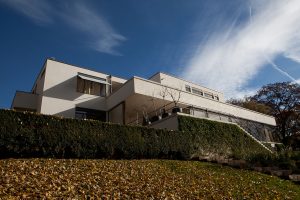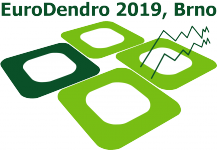Two excursions are planned:
- the Lednice-Vlatice Cultural Landscape — Wednesday, 11 Sep 2019, included in the registration fee
- Villa Tugendhat (optional excursion) — Friday, 13 Sep 2019, after the ending of the conference, not included in the registration fee, cash payment required. Limited to 60 people. Available on a first come first served basis.
Trip to the Lednice-Valtice Cultural Landscape
The participants will have the opportunity to visit a World Heritage Site protected by UNESCO. The excursion will include a visit to the Liechtenstein chateau and a nearby wine cellar in Valtice.
Description
The Lednice-Valtice Cultural Landscape, also known as the Lednice-Valtice Area or Lednice-Valtice Complex (in Czech: Lednicko-valtický areál) is a cultural-natural landscape complex of 283.09 Km2 in the Lednice and Valtice areas of the South Moravian Region, in the Czech Republic.
The Lednice-Valtice Area is registered in the list of monuments protected as World Heritage Sites by UNESCO. It is adjacent to the Pálava Landscape Protected Area (Pálava Biosphere Reserve), World Heritage Site also registered by UNESCO. The close proximity of two cultural landscapes protected by UNESCO is unique.
History
The House of Liechtenstein, the family which reigns by constitutional, hereditary right over the nation of Liechtensten, acquired a castle in Lednice in 1249. This marked the beginning of their settlement in the area. It remained the principal Liechtenstein residence for 700 years, until 1939 and World War II.
The Dukes of Liechtenstein transformed their properties into one large private park between the 17th and 20th centuries. During the 19th century, the Dukes continued transforming the area as a large traditional English landscape park. The Baroque and Gothic Revival style architecture of their chateaux are married with smaller buildings and a landscape that was fashioned according to the English principles of landscape architecture.
The Lednice Ponds (Lednické rybníky) are situated between the villages of Valtice, Lednice, and Hlohovec; as are the Mlýnský, Prostřední, Hlohovecký, and Nesyt Ponds. A substantial part of the cultural landscape complex is covered in pine forests, known as the “Pine−wood”(Boří les), and in areas adjacent to the River Dyje with riparian forests.

Villa Tugendhat
(optional excursion after the ending of the conference)
The Villa of Greta and Fritz Tugendhat, designed by the architect Ludwig Mies van der Rohe and built in 1929–1930, is a monument of modern architecture, and is the only example of modern architecture in the Czech Republic inscribed in the list of UNESCO World Cultural Heritage sites.
The Villa Tugendhat is located very close to the conference venue (300 m). No transportation is needed.

